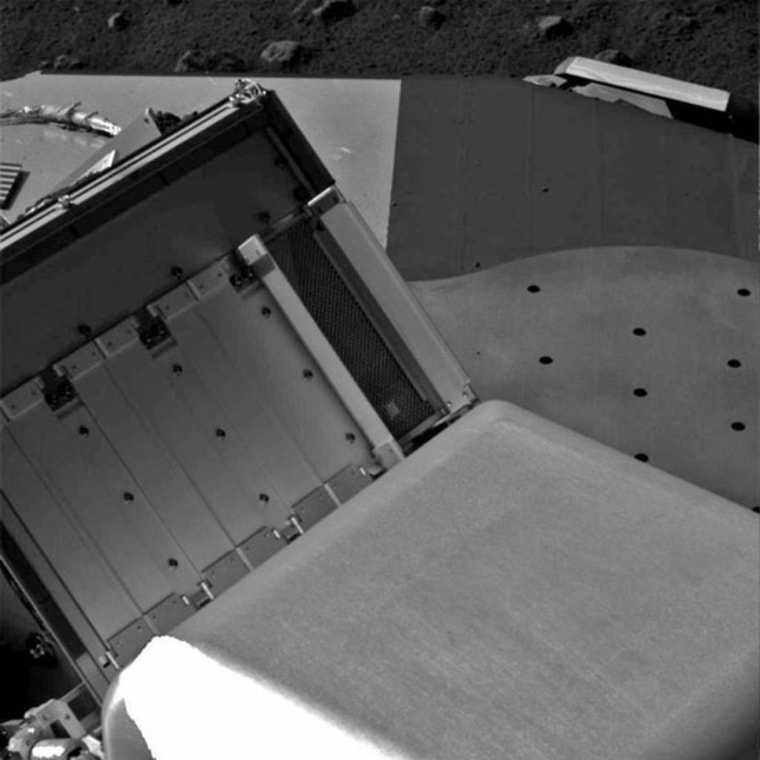NASA's Phoenix Mars Lander pulled an all-nighter for the first time Monday.
Mission controllers extended the spacecraft's schedule to keep it awake during the Martian night so the lander could coordinate with observations made by NASA's Mars Reconnaissance Orbiter as it flew over Phoenix.
Phoenix is using its weather station (which measures temperature, wind speed and wind direction), stereo camera and fork-like thermal and conductivity probe to monitor changes in the lower atmosphere and at the surface of Mars as MRO monitors the atmosphere and ground from above.
The $420 million Phoenix mission, which touched down in the northern reaches of Mars on May 25, is examining the Martian dirt and underlying ice to look for possible signs of habitability in the planet's past. MRO has been orbiting Mars for two years now, studying its surface with cameras, spectrometers and radar.
The lander also stuck its conductivity probe into the Martian dirt Sunday for more than 24 hours of measurements. One goal of this test is to see whether some of the water ice trapped in the regolith becomes vapor and enters the atmosphere as the time of day, and therefore the amount of sunlight hitting the ground, changes.
"We are looking for patterns of movement and phase change," said Michael Hecht, lead scientist for Phoenix's Microscopy, Electrochemistry and Conductivity Analyzer, which includes the fork-like probe.
"The probe is working great," Hecht added. "We see some changes in soil electrical properties, which may be related to water, but we're still chewing on the data."
Phoenix can also stick its conductivity probe up in the air and monitor changes in the atmospheric humidity.
The extended work shift to coordinate with MRO began on Sunday afternoon Pacific Time. In Mars time at Phoenix's landing site, the schedule lasts from the morning of Phoenix's 55th Martian day, or sol, to the afternoon of its 56th sol.
The plan for the 56th sol also includes having the lander continue to test its techniques for collecting a sample of the rock-hard ice lying just below the surface layer of dirt. Once the collecting method is pinned down, Phoenix will use its robotic arm to deliver the icy sample to its Thermal and Evolved-Gas Analyzer, which bakes samples and uses the vapors given off to determine their composition.
Both of the doors to the oven chosen for the ice sample opened successfully Saturday, as confirmed by images from the lander's stereo camera.
